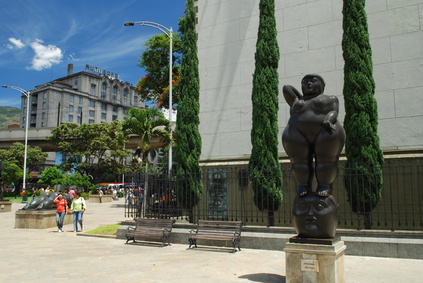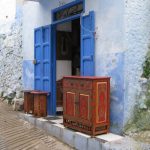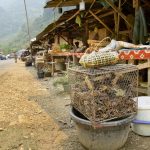 “Welcome to Medellin, my friend! Look at the mountains! Look at the women! I’ll tell you a secret – it’s called Paradise!”
“Welcome to Medellin, my friend! Look at the mountains! Look at the women! I’ll tell you a secret – it’s called Paradise!”
Although Medellin is considered the most dangerous city in Colombia, if not the world, the locals never stopped telling me that it was the most wonderful place on the planet. The food, the weather, the people, they insisted, could not be better anywhere.
That isn’t exactly the image that Medellin holds for the rest of the world. It’s only been 12 years since the death of Pablo Escobar but the reign of terror the drug lord held over the town has damaged its image considerably. He hired young thugs to hunt the police and the streets were awash with crime and violence.
Yet in truth I’ve traveled in few places that had more life and vitality than Medellin. The streets are lined with markets and merchants scraping out a living however they can. They sell food, children’s toys and impotence cures, anything that will help them live another day. The city is set in a sweeping valley surrounded by mountains and the climate is as good as you could hope for.
There are almost no other tourists here and, provided your Spanish is good, this is a distinct advantage – there’s no one trying to rip you off and the locals are genuinely pleased to see you. In the absence of a tourist industry the locals haven’t yet learn to see the traveler as a walking dollar sign and are ready to treat you on your own terms.
So as long as you take the advice of the locals on which areas to avoid, walking around Medellin is a pleasure. The city is full of parks and near the Metro are the famous statues of Botero, the Colombian sculptor who dedicated his life to painting and sculpting the obese.
Although very poor, Medellin is a vibrant city full of educated people and, if it’s a little cut off from the world, that explains why the traveler is made to feel like a special envoy here. They’re aware of the negative image their country has in the foreign media (remember Scarface?) and it’s a matter of pride to convince you differently. Forget all the propaganda about the drugs and violence, they told me, check out the local food and bars!
Good cuisine and nightlife aside, there’s no denying that Medellin is a troubled city where violence is commonplace. In the downtown streets you pass naked children trembling in the gutter, semi conscious after sniffing too much glue. Walk a couple of blocks the wrong direction and you might even see a machete fight, as I did one afternoon – the fighters were so scared of getting hurt that they battled it out ten meters apart, their lunges and frantic retreats strangely like an urban ballet.
But then you go wandering through the plazas and you see old ladies selling herbal cures, kids skating along behind the buses and numbchucku salesmen making impromptu kung fu demonstrations. The sun begins to set behind the valley slopes and you begin to fall under Medellin’s charm again.
Which isn’t to say you shouldn’t take precautions. The locals quickly taught me the rules for staying safe: take taxis at night, never walk down shady streets and never walk home drunk – I’d make too much of an easy target. I was also warned to be on the alert for potential kidnappers – in a country where 3000 people are taken hostage each year, it’s as well to be cautious of people who ask too many questions about where you live and how much money you earn.
The thing about danger is that it’s quite abstract until it actually happens to you. The statistics can make for pretty scary reading but somehow didn’t seem so relevant when taking a passion fruit juice in a street cafe, watching the smiles and laugher dance on the vibrant faces of the clientele.
In the meantime I was charmed every day by the Colombia hospitality, the beautiful women and the excellent climate. Once I knew my way around town the risks were far outweighed by the rewards of living in the most dangerous city in the world.
About Author
Tom Thumb is the author of the Colombia Travel Guide Online





Leave a Reply